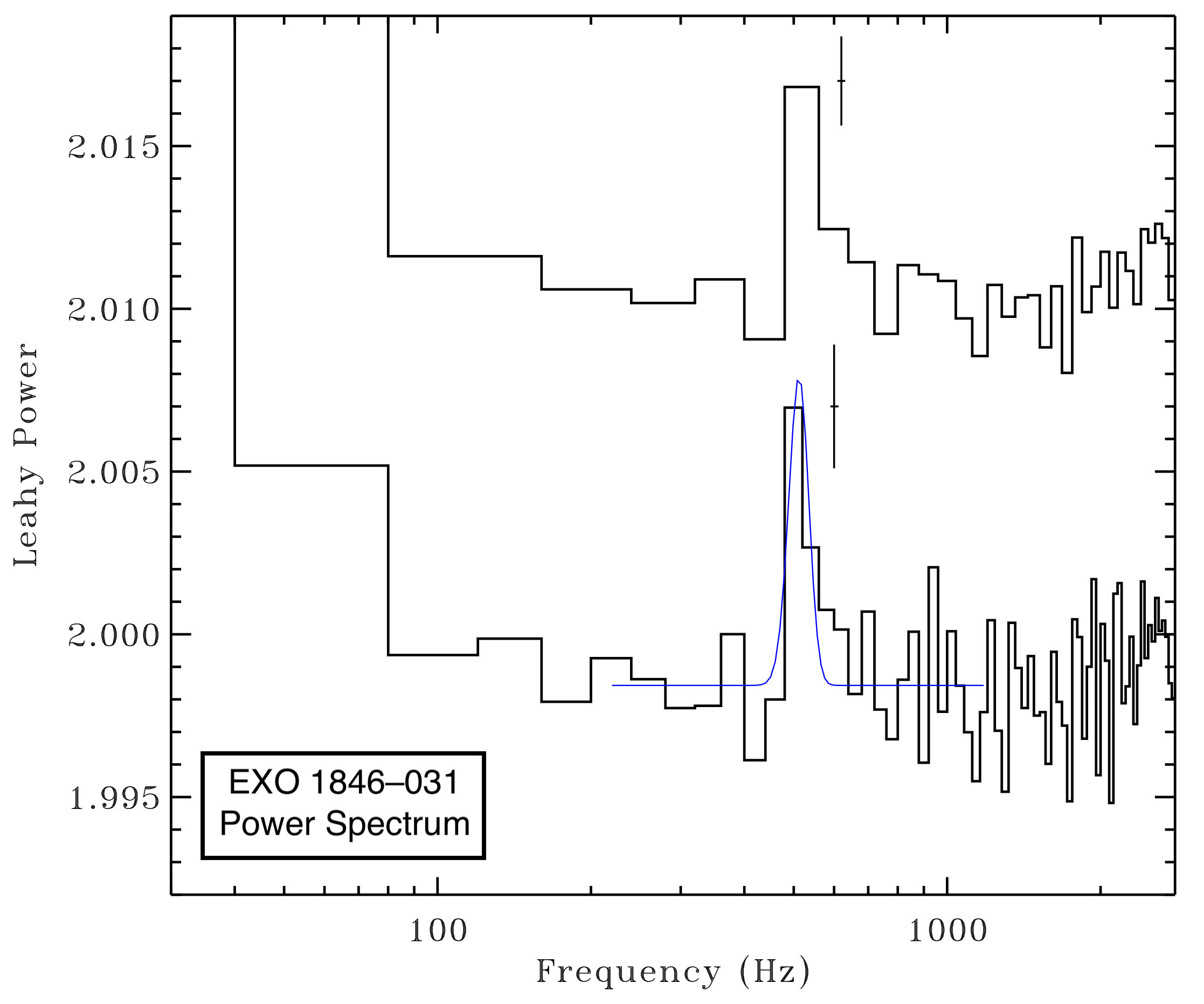NICER / ISS Science Nugget
for January 16, 2020
Highest frequency QPOs seen by NICER to date reported from EXO 1846-031
On July 23, 2019, JAXA's ISS payload MAXI reported a dramatic increase in X-ray brightness from the X-ray binary EXO
1846-031, last detected by the European X-ray observatory EXOSAT in 1985. NICER began an extensive monitoring campaign of
this suspected black-hole binary system on July 31.
In such binaries a black hole draws matter from its companion star, forming a swirling disk of hot gas around the black hole.
The X-ray emission from these objects brightens dramatically when matter actively flows through this accretion disk,
eventually plunging into the black hole. X-rays are generated in the hottest, innermost region of the disk, within a few
hundred kilometers of the black hole's event horizon. The orbital speed of matter in this region is extreme, approaching a
good fraction of the speed of light, and material in this part of the disk can orbit the black hole hundreds of times per
second. Fast oscillations in the X-ray flux, so-called high frequency quasi-periodic oscillations, or HFQPOs, have been
observed from some black hole binaries, with frequencies close to that expected for the orbital frequency of matter in this
innermost part of the accretion disk. Prior to NICER observations the highest frequency seen so far from a black hole system
was 450 Hz.
The recent NICER observations of EXO 1846-031 when the source was brightening during its current outburst show evidence for
oscillations at 500 and 750 Hz, the fastest seen to date. The oscillations are evident as broad peaks in a power spectrum
(see the Figure, which shows the HFQPO at 500 Hz). The occurrence of HFQPOs with a frequency ratio of 2:3 is also a behavior
seen in other black holes. Comparison of the frequencies observed in EXO 1846-031 with the HFQPOs observed in other binaries
where the black hole mass is known suggests that EXO 1846-031 may host a relatively "light-weight" black hole of about 3.4
times the Sun's mass, although it could be heavier if it is also spinning very rapidly. The NICER observation of HFQPOs in
EXO 1846-031 also provides new evidence that this object really is a black hole binary.

Figure:
Power spectrum from EXO 1846-031 from NICER observations showing a high frequency QPO at 500 Hz.
These new NICER findings are described in a paper submitted to the Astrophysical Journal Letters by T. Strohmayer (NASA GSFC)
and collaborators.
<< Previous
Main Index
Next >>